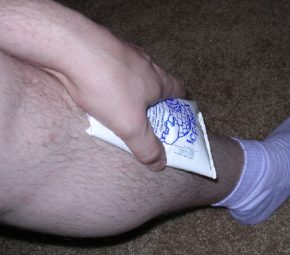This post may contain affiliate links to products or services which, if you purchase, may result in my earning commissions at no additional cost to you.

Doug Denton has never been too concerned when starting a new training cycle. He believed that doing the same routine every few days, would always benefit him. This meant he always ran or jogged the same distances at roughly the same slow pace. Then the 38 year old started to exercise with a new trainer, and the changes came as a revelation to him. His new trainer Jenny Spangler got him to take part in a six to nine week base plan. The purpose of the base plan is to get people fit and strong enough for when the actual training plan begins.
Doug was glad of the extra stamina he had built up once the training plan was put into action. He and Spangler during the plan went on runs of different lengths and tempos, and extra fitness allowed him to finish the higher tempo sessions. Doing the base weeks means that people just like Doug will actually gain more from the full training program with less risk of being injured during it. The base cycles that include the faster paced runs as well as a weekly longer run put people in a better position to start and complete their next training program.
Spangler herself stated that too many people tend to overlook the importance of all the work put in during the base training weeks. Completing the base trading is just as vital as finishing the training in the peak weeks of training. It can be during the peak periods of training when the advantages of doing the base weeks becomes noticeable.
Begin strongly enough
Putting in the base weeks pays dividends later on providing that the work outs and the runs are hard but not grueling. Putting in a combination of longer runs and shorter yet higher tempo runs is the key to making people fitter and stronger so that they performed better during training programs, or competitive races. The key is increasing the pace or the intensity sooner than during previous base weeks yet not raising it as high as it is during full training season or in races.
Mixing up the slower runs with longer sessions, hill runs, or faster runs makes you fitter and faster by the time that the full training has begun. Doug felt sharper, stronger, and faster yet did not notice how much faster he was compared to previous years until he started racing again. He found that he could finish an half marathon two minutes faster for instance. Basically, he found that been a little faster at the start of his base weeks made him a lot faster when it came down to running in competitive events.
Lay the groundwork for the coming season
Give yourself the chance of having a more successful competitive running season by using the following base weeks program to have the speed and endurance needed to improve overall performance. Below is the three week / 14 days base plan that can be followed two or three times to make six to nine weeks in total. Whenever doing hill, high tempo or fartlek days remember to warm up and then cool down by doing a ten-minute easy run either side of the base training.
- Day 1 begin with a long run of between 45 to 90 minutes leading to moderate levels of discomfort
- Day 2 take a rest, do cross training, or go for an easy run
- Day 3 run for between 20 and 60 minutes at moderate effort
- Day 4 do long fartleks with 3 or 4 surges of 3 minutes at 10 k or 10 mile effort interspersing 3 minutes of easy running between the fast segments
- Day 5 rest up, cross train, or a short easy run
- Day 6 hill running 45 to 60 seconds of hard effort repeated 4 times, may be repeated between 8 to 10 times after strolling or jogging down the hill in between the repeats
- Day 7 give yourself a well-earned rest
- Day 8 take a long run of 45 to 90 minutes ran at an easy pace
- Day 9 cross train, an easy run, or have a rest
- Day 10 run for 20 to 60 minutes at a moderate level of effort
- Day 11 do short fartleks with hard levels of effort, with each burst lasting between 30 seconds to a couple of minutes with the rest been equal to the length of each burst
- Day 12 another rest day
- Day 13 rest, cross train or a short run
- Day 14 a longer run or race the first part at half marathon or marathon effort, the second part at a brisk yet controlled tempo



